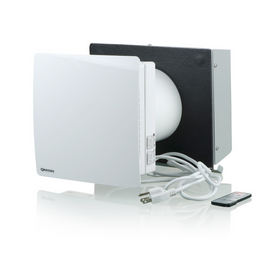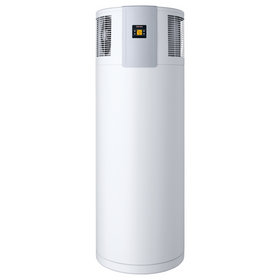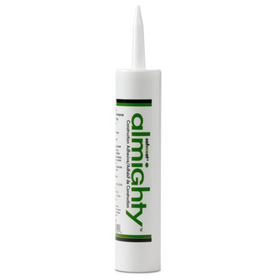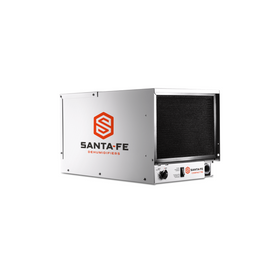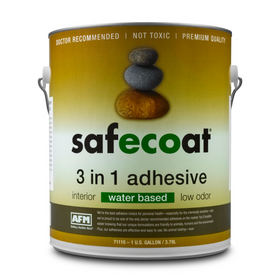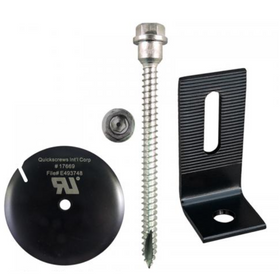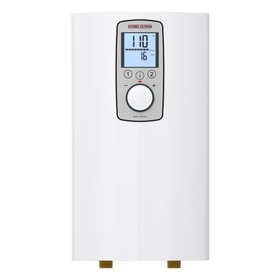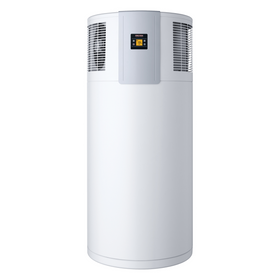
A Look at the Most Common Home Energy Rating Systems
Last Updated: Mar 10, 2025We spend a lot of time in our homes—it’s where we play, eat, rest, connect with family, and more. It makes sense that we want our homes to be comfortable and beautiful, and even better if the utility costs to power our homes are low. An energy-efficient home achieves all of these benefits.
While the benefits of living in a more energy-efficient home are clear, figuring out what that means in real life can be difficult. Green home rating systems and standards or certification programs can help. These programs are tools for homeowners (and those looking to build, buy, or sell homes) to understand and achieve a healthier, more efficient, and more comfortable home. But understanding what these systems and certifications mean can be another challenge. Here are some of the top home energy rating systems and certifications.
Table of Contents
- Home Energy Rating System (HERS)
- ENERGY STAR Certified Homes
- R-2000 Homes
- Leadership in Energy and Environmental (LEED) Homes
- Passive House Homes
- Net-Zero Energy Homes
- Living Building Challenge Homes
- Bottom Line

Home Energy Rating System (HERS)
The Residential Energy Services network developed the Home Energy Rating System (HERS) to rate the energy efficiency of any home. HERS ranks homes with a single score, from 0 to 150, with lower number ratings indicating more energy-efficient homes. The “Reference Home,” meaning a standard home built to code, has a score of 100. The average resale home in the United States has a rating of about 130. A home that is considered very efficient comes in with a rating of 60 or below. A house that produces all the energy that it consumes—called a net-zero energy home— would receive a score of zero.
If you’re looking to build, sell, or buy a home, the HERS system is a great way to understand a home’s energy use. Lower numbers on the HERS system can contribute to higher resale value because the buyer knows about the energy efficiency value they are gaining. There are currently over 2.6 million homes in the United States with a HERS rating. Given that there are over 70 million single-family homes, though, that’s less than four percent—but the trend is growing.

ENERGY STAR Certified Homes
The ENERGY STAR program is run by the U.S. government to help consumers understand and gain access to more energy-efficient appliances, homes, and other buildings. ENERGY STAR certified homes are at least 10 percent more energy-efficient than homes built to code, with average energy efficiency being 20 percent better than standard built homes. These efficiencies can help homeowners save $250 a year on average.
While ENERGY STAR certified homes are better than standard homes built to code, several certifications go further than Energy Star certified homes. These standards and certifications can help homeowners achieve maximum home comfort with very low, or even no, heating and electricity costs for operation.

R-2000 Homes
R-2000 is an energy efficiency standard and certification program developed by Natural Resources Canada. While R-2000 was developed over 35 years ago, its most recent update happened in 2012. Homes built to the most current R-2000 standard are typically 50 percent more efficient than homes built to code. R-2000 homes result in significant improvement over ENERGY STAR certified homes in terms of efficiency and energy savings.

Leadership in Energy and Environmental (LEED) Homes
The U.S. Green Building Council developed LEED as a more holistic green building rating to address the significant impact buildings have on the environment. Currently, LEED is the most widely adopted rating system for green buildings in the world.
LEED is used to rate the sustainability of multiple scales of buildings—from interior design to whole neighborhoods and cities—including homes. LEED certification measures five primary aspects of a building’s sustainability: landscaping, water efficiency, materials and resources, indoor environmental quality, and energy efficiency. Under the LEED certification system, a home receives points in each of these sustainability categories; the largest number of points is in energy efficiency. A LEED-certified home must, at a minimum, meet the requirements of an ENERGY STAR certified home—meaning your home will be 20 to 25 percent more efficient than a standard home built to code.
An important thing to note about LEED for Homes certification is that the system depends on awarding points upfront during the building design process. LEED does not measure how the home operates over time. For commercial buildings, LEED for Existing Building Operations and Maintenance does measure ongoing performance.

Passive House Homes
The idea of a Passive House (initially started in Germany as Passivhaus) is an effort to make homes stay comfortable with very little energy use beyond what the house gets passively from the environment. The Passive House approach to design and building homes is very energy efficient, and it relies on five principles. These five principles result in a Passive House having an airtight highly insulated envelope with air exchange systems that both preserve heat and ensure high-quality indoor air that supports the comfort and well being of occupants.
Generally, homes built using passive house design principles will save at least 75 percent on their energy bills compared to the same home built to code.

Net-Zero Energy Homes
Net-zero homes are just what their name sounds like—these homes produce all the energy they use on-site, resulting in net-zero energy use for the house over a year. Net-zero energy homes are very efficient, use electric sources for heating, and produce electricity on-site using solar. Because of the solar, they typically use less energy than they produce in the long summer days and use more power than what they produce during shorter winter days.) Earning a HERS rating of 0 can certify that a home is truly net-zero energy.
While achieving a net-zero home may feel like a big lift financially, the upfront costs pay for themselves over time with savings on energy bill savings—by definition, net-zero energy means homes save 100 percent. A report by the Rocky Mountain Institute in 2018 found payback times in many American cities are improving. These payback times range from 7.8 years in San Francisco to 13.8 years in Virginia Beach, VA, with many North American cities in the middle of that range.
Kate Knuth
Dr. Kate Knuth is founder, strategist, and writer at Democracy and Climate LLC; and a fellow at the University of Minnesota Institute on the Environment. Kate was the first chief resilience officer for the City of Minneapolis and founding director of the Boreas Leadership Program. She served six years in the Minnesota House of Representatives, where she championed clean energy, climate, and toxic chemical policy reform policy. Kate also served six years on the Minnesota Environmental Quality Board. She earned a PhD from the University of Minnesota, a MSc from Oxford University, and a BA from the University of Chicago. She was a Fulbright Fellow in Norway.


